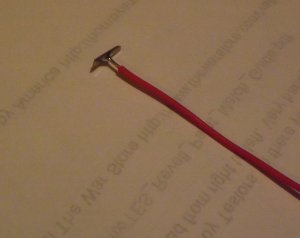DairyStateDad
Mumbling in the corner
I'm figuring that I will solder my feeder wires to their respective track sections (flex track) before I lay the track in place.
My reasoning is that it's likely to be a lot easier to do at the workbench. Also, that will allow me to much more easily attach the wires to the underside of the rails, out of sight. And from my highly inexperienced vantage point, that would seem to be just so much easier than doing it after the track is in place on the layout.
The odd thing is, most guides I come across seem to assume attaching the feeders after the track is laid in place.
So is there a reason not to do it the way I plan to? Or is that a lot more common than I realize and I just haven't seen a representative sample of the advice out there?
My reasoning is that it's likely to be a lot easier to do at the workbench. Also, that will allow me to much more easily attach the wires to the underside of the rails, out of sight. And from my highly inexperienced vantage point, that would seem to be just so much easier than doing it after the track is in place on the layout.
The odd thing is, most guides I come across seem to assume attaching the feeders after the track is laid in place.
So is there a reason not to do it the way I plan to? Or is that a lot more common than I realize and I just haven't seen a representative sample of the advice out there?


